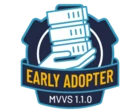Many years ago we changed our web-based software to support prompts, menu items, and help to support multiple languages. We did that by using a number for the prompt like 2300 was "Customer Name". Depending on the language you would go to the matching language file to translate the 2300 number to "Nombre cliente" for Spanish and "Nom du client" in French for example.
In the 18 years we have demoed this to United States-based companies nobody expressed any interest until last week. This client would like to have code files like
- Code A1 equals Apple or Pomme in Spanish
- Code Z1 equals Avacado or Avocat in Spanish
Our Universe database has a file called Fruits in this example. So my questions for those who have done this are:
- Do you add a field for every language?
- Do you add a multivalue field for every language?
- Do you change the value in the file to a number and translate it to a language field?
- Do you add a file called Fruit_ES for Spanish?
- Depending on the method chosen, how does a SELECT Fruits work for each language?
Regards,
Doug
Last auto-saved at 09-06-2024 15:06
------------------------------
Doug Averch
Owner
U2 Logic
------------------------------







